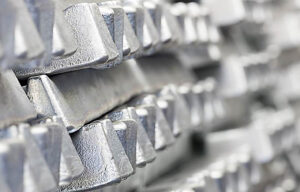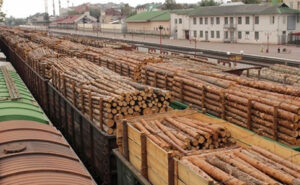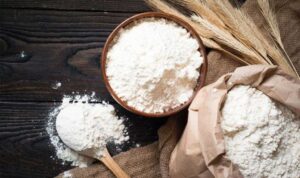
In January-May 2025, Ukraine imported aluminum and aluminum products worth $206.628 million, up 20.2% compared to the same period in 2024. In May, imports of aluminum products amounted to $40.340 million.
Over the same period, aluminum exports increased by 31.9% to $57.761 million. In May, the company exported products worth $12.698 million.
In 2024, aluminum imports amounted to $446.006 million (+21.7% compared to 2023), and exports amounted to $124.408 million (+27.4%). In 2023, Ukraine imported aluminum products worth $366.463 million and exported $97.616 million.

In January-May this year, Ukraine reduced exports of semi-finished carbon steel products in physical terms by 34.1% year-on-year to 506,071 thousand tons.
According to statistics released by the State Customs Service (SCS) on Friday, exports of carbon steel semi-finished products fell by 34.7% to $248.953 million in monetary terms.
The main exports were mainly to Bulgaria (40.43% of supplies in monetary terms), Turkey (15.96%) and Poland (15.07%).
During the period, Ukraine imported 3,303 thousand tons of semi-finished products worth $2.687 million, mainly from the Czech Republic (72.47%), Italy (26.26%) and Romania (0.93%).
As reported, in 2024, Ukraine increased exports of carbon steel semi-finished products in physical terms by 56.7% compared to 2023 – up to 1 million 886.090 thousand tons, while revenue in monetary terms increased by 52.4% to $927.554 million. The main exports were made to Bulgaria (32.06% of supplies in monetary terms), Egypt (18.50%) and Turkey (11.14%).
In 2024, Ukraine imported 306 tons of semi-finished products worth $278 thousand from the Czech Republic (88.13%), Romania (7.19%), and Poland (2.88%), while in 2023 it imported 96 tons worth $172 thousand.

In January-April of this year, Ukraine reduced exports of titanium-containing ores and concentrates in physical terms by 91.4% compared to the same period last year, to 277 tons.
According to statistics released by the State Customs Service (SCS) on Friday, in monetary terms, exports of titanium-containing ores and concentrates decreased by 90.6% to $496 thousand.
The main exports went to Uzbekistan (35.61% of shipments in monetary terms), Turkey (35.01%), and Egypt (29.38%).
In the first five months of 2025, Ukraine imported 24 tons of titanium-containing ore worth $39,000 from China (94.87%, deliveries took place in January) and Uzbekistan (5.13%, deliveries took place in May).
In addition, in the first five months of 2025, Ukraine exported 1,099 tons of niobium, tantalum, vanadium, and zirconium ores and concentrates worth $1.704 million to Spain (61.22%), Italy (17.65%), and Germany (11.17%). to Spain ($1.704 million, 61.22%), Italy ($1.06 million, 17.65%), and Germany ($100,000, 11.17%). At the same time, the country imported 104 tons of such ores worth $258 thousand from Spain (55.17%), China (28.66%), and the Czech Republic (11.85%).
As reported, in 2024, Ukraine reduced exports of titanium-containing ores in physical terms by 37.5% compared to the previous year, to 7,284 tons. In monetary terms, exports of titanium-containing ores and concentrates decreased by 40% to $11.654 million. The main exports were to Turkey (62.82% of shipments in monetary terms), Egypt (7.38%), and Poland (6.93%).
In 2024, Ukraine imported 314 tons of titanium-containing ore worth $492 thousand from China (87.78%), Vietnam (6.11%), and Senegal (also 6.11%).
At the same time, experts pointed to discrepancies in statistics on exports of titanium-containing ores.
However, in response to a request from Interfax-Ukraine, the State Customs Service (SCS) of Ukraine reported that complete data on exports of titanium raw materials is not provided due to restrictions on the volume of export and import operations with military and dual-use goods, which are reflected in aggregate form under “Other goods.”
They explained that, in particular, deliveries of titanium-containing ores from companies differ from the SCS data.
“We would like to inform you that these deliveries are included in the statistical exports from Ukraine, but are not reflected in the foreign trade statistics published by the State Customs Service (…) under commodity code 2614 ”Titanium ores and concentrates” in view of the following (…) In accordance with the provisions (…) when protecting data for confidentiality purposes, any information considered confidential shall be reported in full at the next higher level of product data aggregation,” the State Customs Service explained in its response to the agency.
It was clarified that information on customs clearance and movement across the customs border of Ukraine of goods subject to export control is included in the list of information containing official information in the State Customs Service, in accordance with the relevant order.
In Ukraine, titanium-containing ores are currently mined mainly by PJSC United Mining and Chemical Company (OGHK), which manages the Vilnohirsk Mining and Metallurgical Plant (VGMK, Dnipropetrovsk region) and the Irshansk Mining and Processing Plant (IGZK, Zhytomyr region), as well as LLC “Mezhirichensky GZK” and LLC “Valky-Ilmenit” (both LLCs are located in Irshansk, Zhytomyr region). In addition, the production and commercial firm Velta (Dnipro) built a mining and processing plant at the Birzulivskoye deposit with a capacity of 240,000 tons of ilmenite concentrate per year.

Since the beginning of the year, exports of wood and wood products from Ukraine amounted to 1.42 million tons worth $671.8 million. Compared to the same period in 2024, when 1.34 million tons were exported for $593.9 million, the volume of exports increased by 81,700 tons, or 6%. At the same time, in monetary terms, there was an increase of $77.9 million, or 13%.
Pine products account for the largest share, 68.6%, indicating high demand for this type of wood on foreign markets. Spruce timber ranks second with 19%, followed by oak with 6.6% of the total volume.
At the same time, since the beginning of the year, customs authorities have detected violations amounting to over UAH 31.4 million.

Flour and cereal producers are concerned about a reduction in flour exports to the European Union after the expiry of autonomous trade measures on June 6, as 75% of their exports currently go to the EU, Rodion Rybchinsky, director of the Ukrainian Flour Millers Association, said in an interview with Interfax-Ukraine.
“Starting from June 6, we have the opportunity to supply a total of 583,300 tons of wheat and wheat flour to the EU market by the end of the year. But since the quota is combined, I am not sure that we will be able to fill it. It is much easier for wheat exporters to find buyers in the EU and fill their quota,” he said.
Rybchynsky added that the industry association continues to use all possible communication channels to convey to European officials the need to allocate a separate quota for Ukrainian flour for export to the EU or to remove it altogether.
The head of the Ukrainian Flour Millers Association stated that before the war, there were 678 enterprises specializing in grain processing in Ukraine, but in 2022, 192 enterprises were destroyed and remained in the occupied territories. As of the end of 2024, 88 enterprises have been restored.
At the same time, according to his information, exports of flour and cereals have fallen by 50% since the start of the war. Among the reasons, the expert cited a reduction in production and changes in logistics: whereas exports used to be mainly by sea, since the start of the war they have been forced to switch to road and rail transport, which are more expensive than sea transport.
Due to problems with transporting products across the Black Sea, container shipping has not yet been fully restored. As a result, the geography of grain processing product sales has changed significantly since the beginning of the war: 75% of products are exported to the European market, of which 55% go to EU countries, 15% to the Middle East, 4% to Africa, and 2% to Asia, according to the head of the Ukrainian Flour Millers Association.
As reported, First Deputy Minister of Agrarian Policy and Food Taras Vysotsky said in comments to journalists that one of the government’s strategies in negotiations with the European Commission will be to request that the established quotas be divided by commodity codes.
The European Commission has approved quotas for Ukrainian agricultural products, which will be in effect from June 6 until the end of 2025 as part of the Deep and Comprehensive Free Trade Area (DCFTA) agreement. According to a document published on the EU website, by the end of 2025, Ukraine will be able to supply the EU market under the Deep and Comprehensive Free Trade Area in a 7/12 month mode (7/12) with wheat, flour, and meslin – 583,330 tons , corn – 379,167 thousand tons, barley – 204,167 thousand tons, poultry meat – 52,511 thousand tons, beef – 7 thousand tons, eggs – 3,500 tons, milk and cream – 5,833 tons, dry milk – 2,917 tons, butter – 1,750 tons.